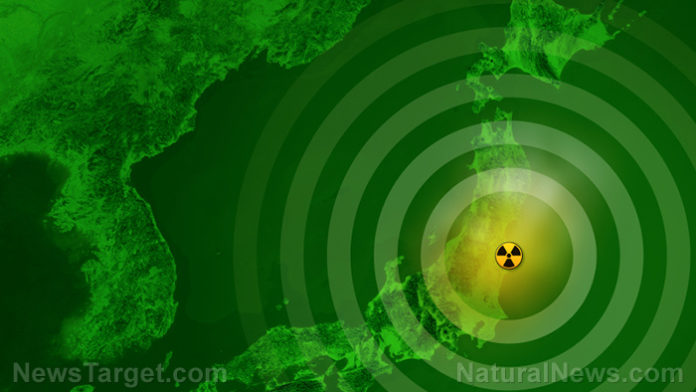The Japanese utility giant Tepco is planning to release more than 1 million cubic meters of treated radioactive water — enough to fill 500 Olympic-size swimming pools — from the wrecked Fukushima Dai-Ichi nuclear power plant into the Pacific Ocean, part of its nearly $200 billion effort to clean up the worst atomic …
Additionally, How long will Fukushima be uninhabitable? A large area around the Fukushima nuclear power plant will be uninhabitable for at least 100 years.
Will Fukushima ever be habitable? “Fukushima will never return to being totally habitable—pockets have been taken out forever, or at least for the imaginable future.”
Subsequently, Has Fukushima been cleaned up? However, at the Fukushima Daiichi Nuclear Power Plant, « We’re still just very near the starting line » for cleaning up after the meltdowns and explosions triggered by the natural disasters, Fukushima prefecture Governor Masao Uchibori said at a 17 February press briefing. The plant owner, Tokyo Electric Power Co.
FAQ
Can Fukushima happen again?
A 2015 study from European researchers estimated that there was a 50% chance of another Fukushima-scale nuclear accident within the next 50 years, a Chernobyl-scale event in the next 27 years, or a Three Mile Island-scale event in the next 10 years.
Where is the most radioactive place in the world? 2 Fukushima, Japan Is The Most Radioactive Place On Earth
Fukushima is the most radioactive place on Earth. A tsunami led to reactors melting at the Fukushima nuclear power plant. Even though it’s been nine years, it doesn’t mean the disaster is behind us.
Is Hiroshima still radioactive? Is there still radiation in Hiroshima and Nagasaki? The radiation in Hiroshima and Nagasaki today is on a par with the extremely low levels of background radiation (natural radioactivity) present anywhere on Earth. It has no effect on human bodies.
Why was Chernobyl worse than Fukushima? Chernobyl had a higher death toll than Fukushima
The toxic fumes not only contaminated the local vegetation and water supply near Pripyat (a Ukrainian city that was once part of the Soviet Union) but also poisoned nearby residents, some of whom went on to develop cancer.
Is Nagasaki still radioactive?
Is there still radiation in Hiroshima and Nagasaki? The radiation in Hiroshima and Nagasaki today is on a par with the extremely low levels of background radiation (natural radioactivity) present anywhere on Earth. It has no effect on human bodies.
What was worse Chernobyl or Fukushima? According to the International Atomic Energy Agency (IAEA), there was less total atmospheric release of radioactivity from the Fukushima accident compared with Chernobyl due to the different accident scenarios and mechanisms of radioactive releases.
What is the most radioactive place on earth?
2 Fukushima, Japan Is The Most Radioactive Place On Earth
Fukushima is the most radioactive place on Earth. A tsunami led to reactors melting at the Fukushima nuclear power plant. Even though it’s been nine years, it doesn’t mean the disaster is behind us.
What INES level was Fukushima? The nuclear accident at Fukushima Daiichi is now rated as a level 7 « Major Accident » on INES.
Is Fukushima worse than Chernobyl?
Chernobyl is widely acknowledged to be the worst nuclear accident in history, but a few scientists have argued that the accident at Fukushima was even more destructive. Both events were far worse than the partial meltdown of a nuclear reactor at Three Mile Island near Harrisburg, Pennsylvania.
Does Japan have nuclear bombs?
Japan does not possess any programs for the development of weapons of mass destruction (WMDs), but it is the only non-nuclear weapon state in possession of a full nuclear fuel cycle and has advanced WMD-relevant industries.
How many bananas does it take to cause radiation poisoning? Yes, you will certainly die from radiation poisoning if you are able to eat 10,000,000 bananas at once. You may also witness chronic symptoms if you eat 274 bananas a day for seven years.
What food has the most radiation? Brazil nuts are the most radioactive everyday food. However, large quantities of Brazil nuts, lima beans, and bananas all can set off radiation detectors when they pass through shipping. The radiation dose from eating one banana is calculated at 10−7 Sievert or 0.1 microSieverts.
Are smokers lungs radioactive?
Cigarettes made from this tobacco still contain these radioactive elements. The radioactive particles settle in smokers’ lungs, where they build up as long as the person smokes. Over time, the radiation can damage the lungs and can contribute to lung cancer.
What is worse than an atomic bomb? hydrogen bomb has the potential to be 1,000 times more powerful than an atomic bomb, according to several nuclear experts. An atomic bomb works through nuclear fission, which is the splitting of large atoms like Uranium or Plutonium into smaller ones.
Why is Chernobyl still radioactive?
Iodine, strontium and caesium were the most dangerous of the elements released, and have half-lives of 8 days, 29 years, and 30 years respectively. The isotopes Strontium-90 and Caesium-137 are therefore still present in the area to this day.
What was worse Pearl Harbor or Hiroshima? The bombings of Hiroshima and Nagasaki were vastly more destructive and violent events than the Japanese attack on Pearl Harbor in Hawaii. At Hiroshima, huge numbers of people – mostly non-combatants – were burned alive, and an arms race began. In contrast, Pearl Harbor was a military base.
Did the core exploded at Fukushima?
Following a major earthquake, a 15-metre tsunami disabled the power supply and cooling of three Fukushima Daiichi reactors, causing a nuclear accident beginning on 11 March 2011. All three cores largely melted in the first three days.
Has the US ever had a nuclear meltdown? The Three Mile Island Unit 2 reactor, near Middletown, Pa., partially melted down on March 28, 1979. This was the most serious accident in U.S. commercial nuclear power plant operating history, although its small radioactive releases had no detectable health effects on plant workers or the public.
Don’t forget to share this post !























